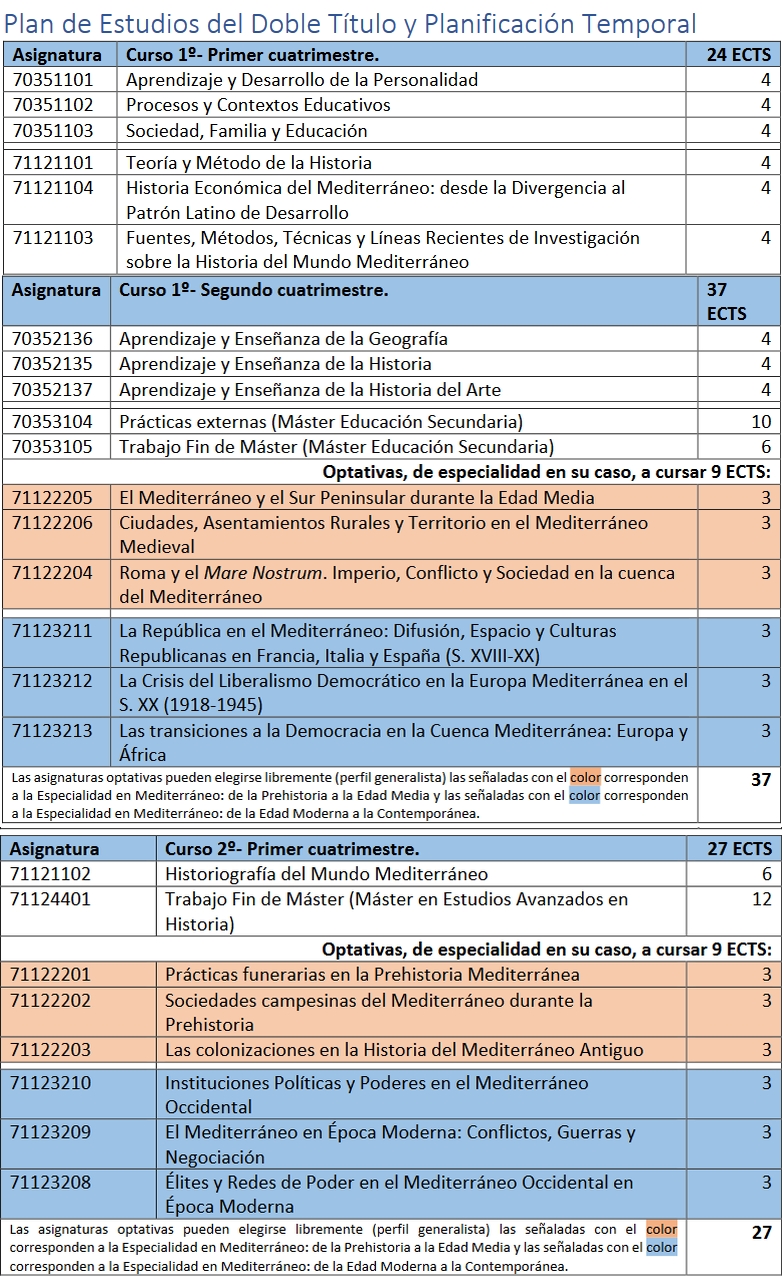Structure and distribution of credits
{{pre.error[0].message}}
{{pre.error[0].message}}
| Course | Basic | Mandatory | Optatives | Curricular internships | End of Studies Dissertation | Total |
|---|---|---|---|---|---|---|
| {{curso}}º | {{c.credects}} | {{c.credects}} | {{c.credects}} | {{c.credects}} | {{c.credects}} | {{creditos | map: 'credects' | toArray | sum}} |
| Total | {{ct.credects}} | {{ct.credects}} | {{ct.credects}} | {{ct.credects}} | {{ct.credects}} | {{cre.creditos_totales | map: 'credects' | toArray | sum}} |
The double degree design has been developed thanks to the common competencies that are shared by the independent degrees stated in this report. Double degree students will take a total of 88 ECTS organised in two academic years.
Given that the “Master’s in Advanced Studies in History: the Mediterranean World" offers specialisations, double degree students may obtain any of the specialisations if they meet the requirements set out in the master's (18 ECTS) or to complete the master's without specialisation:
The successful completion of all the contents included in the programme will mean the issue of a degree for each master's.
Double master's students must be enrolled and carry out two Master’s Thesis in compliance with the regulations in force applied to the linked degrees. Under no circumstances, both Master’s Thesis may join in the same public defence and must have different extension and contents in compliance with the ECTS load of each degree.
